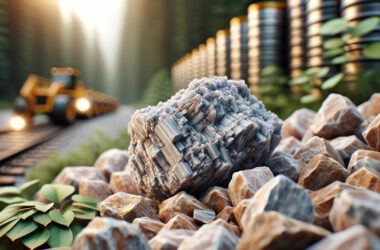A recent study published in Nature has shed light on the structural and electrochemical properties of SnO2/rGO and SnO2/rGO-CTAB samples for potential use in lithium-ion batteries. The study, conducted by researchers, involved the analysis of XRD patterns, TG and DTG curves, XPS spectra, SEM images, TEM images, and cyclic voltammograms to assess the performance of the composite materials.
The XRD patterns revealed characteristic peaks corresponding to the crystal planes of tetragonal SnO2 in all samples. The TG and DTG curves indicated the presence of graphene in the SnO2/rGO-CTAB sample. XPS spectra showed a shift in the binding energies of Sn 3d orbitals in the composite samples, suggesting interactions between graphene and SnO2.
SEM images displayed agglomerated SnO2 particles on graphene sheets, while TEM images revealed the morphology of the composite materials with distinct crystal planes. Cyclic voltammograms demonstrated the lithiation and delithiation mechanisms of the samples, with the composite materials showing improved performance due to the presence of graphene.
Furthermore, the study highlighted the importance of the interlayer embedded structure formed by CTAB in enhancing the structural stability of the composite materials. The SnO2/rGO-CTAB sample exhibited impressive cyclic stability and high reversible specific capacity compared to SnO2 and SnO2/rGO samples.
Overall, the research findings emphasize the potential of SnO2/rGO-CTAB composites as high-performance anode materials for lithium-ion batteries, with implications for advanced energy storage applications. The study’s comprehensive analysis provides valuable insights for the development of efficient and reliable battery technologies in the future.










